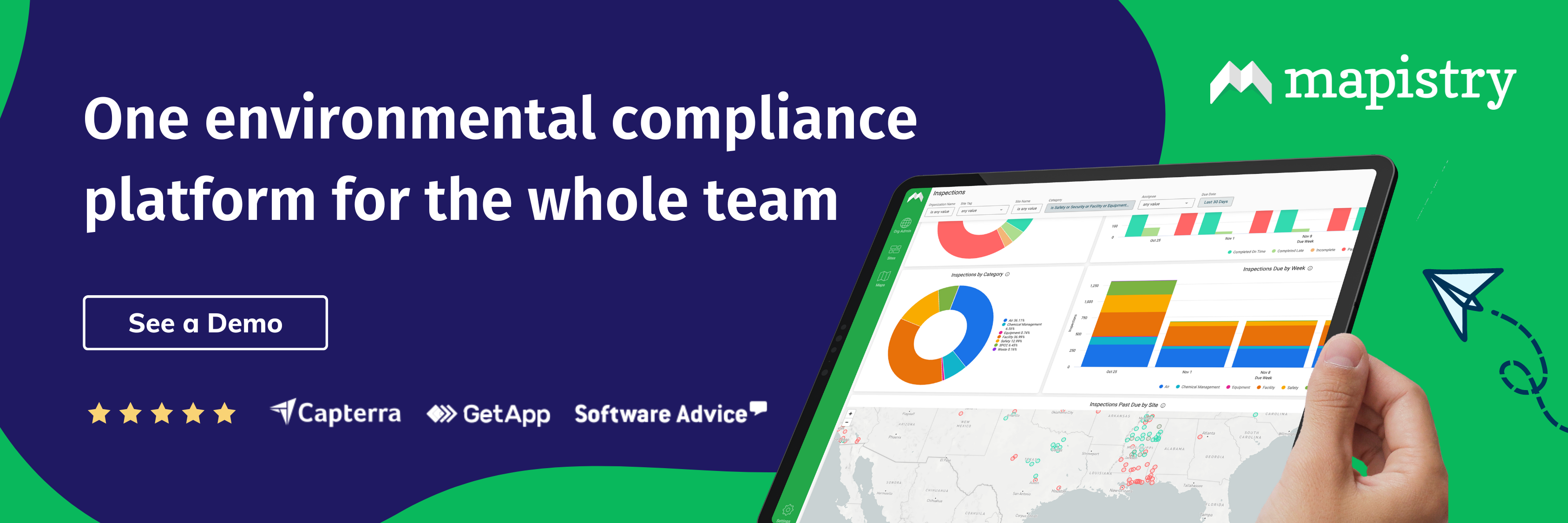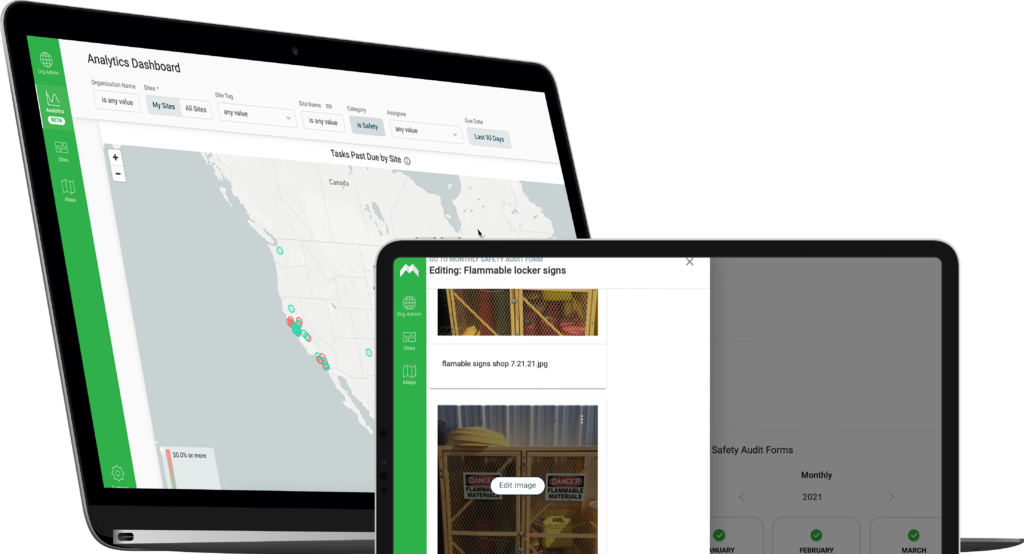The last year and a half has highlighted numerous market trends that emphasize the growing need for increased transparency and accountability surrounding environmental and safety compliance operations. As a result, more and more manufacturing and building materials companies have chosen to adopt smarter software solutions. We have found that technology helps businesses continually assess and mitigate compliance risks, as well as overcome significant resource constraints post-COVID that have limited their compliance capacity. In order to help prepare manufacturing and building materials companies for today’s heightened regulatory scrutiny and compliance demands surrounding their environmental and safety data, Mapistry hosted a webinar this week showcasing how our new analytics dashboards are empowering companies with the structure, automation, and insight they need to run more efficient, effective, and risk-resilient EHS compliance programs. This blog will dive into the top 3 takeaways from the webinar to help you pioneer a more sustainable path into the future of environmental and safety compliance.
Better Visibility to Mitigate Risk
EHS professionals are all too aware of the importance of having a system in place that can detect issues before they turn into bigger problems. During the webinar, we explored how our analytics dashboards highlight problem areas; this eliminates time wasted on hunting for environmental red flags or safety hazards. EHS leaders are also aware of the ever-changing regulatory landscape, where rules rapidly evolve to meet the needs of people, environment, and place; while this is a positive trend towards a more sustainable industry, it creates more complexity and sharper consequences. Therefore, there is a greater need to mitigate potential penalties within the different compliance areas. In the webinar, Ryan mentioned that market trends highlight the need for enforcement preparedness. He discussed the recent EPA memo which emphasizes the importance of two key mitigation measures: electronic reporting and increased transparency of compliance data. These trends are a result of more remote inspections and audits, and are likely to continue, as regulators discovered the efficiency of gathering digital and virtual information in the last year. Similarly, OSHA standards will continue to rise, demanding proactive attention towards health and safety initiatives. Fortunately, technology can be used to enable teams to be accomplished on the data reporting side, including audit readiness and avoidance of unnecessary fines. Over the last year, we have identified more and more regulatory changes that drive the need for better analytics. As emphasized in the webinar, analytics provide the visibility needed to make intelligent decisions and reduce the risk of non-compliance. The purpose-built dashboards allow you to proactively detect issues before they become fines and make it easier for managers to troubleshoot issues; this visibility creates accountability across teams. When teams have all of their EHS data under a single dashboard, it helps drive consistency across the organization.
Actionable Insight in Real-Time
While there are obvious benefits to capturing all of your organization’s data in one place, there are even more rewards that come from the ability to analyze, configure, and share the data in a way best aligns with your organization’s priorities. With Mapistry, data capture is pushed into the next frontier. Between the growing trends of resource constraints and enforcement readiness, the last year has shown us the importance of driving intelligent environmental and safety decisions with technology. Market trends are creating the demand for more useful data – and analytics are key because they allow teams to do more with their data! It’s also important for software to provide the flexibility needed to support your unique compliance requirements. Whether it’s tracking safety policies or monitoring the performance of your air or water compliance programs, managers need a better way to analyze trends and take action across their EHS inspections, tasks, or logs. Additionally, dashboards should be specifically curated for EHS teams to oversee their unique compliance permits and policies, therefore reducing significant time spent on consultants and costly configurations. As more data is collected and visibility increases, priorities can shift and data reporting may change; thus, having a centralized system in place like Mapistry ensures that mission-critical compliance checks don’t fall through the cracks. Our goal is to create more proactive tools for data collection, but also, empower teams to take-charge and independently manage risk for both environmental and safety initiatives. With real-time insight, users are able to correct issues before they become a problem. Teams are also able to break down communication silos in order to operate with more transparency. With a holistic approach to data capture, analytics save you time and money, while positioning your business to be aligned with future environmental, social, and governance (ESG) goals.
Preparedness for Future EHS and ESG
Having a modern analytics platform in place is critical to pioneering the next frontier of industrial EHS programs. Aside from regulations becoming more numerous and complex, teams are also receiving a larger demand from stakeholders in response to how EHS aligns with ESG. The public wants full data disclosure and internal shareholders want to know the strategy for maintaining compliance; both internal and external stakeholders demand full visibility into the steps required for environmental justice. As a result, EHS data has become one of the most valuable, quantitative metrics that allows teams to assess how they will meet the ever-changing compliance requirements. Fortunately, Mapistry’s analytics platform provides actionable insight into how organizations are tracking against ESG metrics, and provides a framework to establish sustainability goals. The future of EHS falls within the scope of environmental social governance. This cultural shift aligns with Mapistry’s values: support the industries that fuel our economy while being grounded in the philosophy of environmental protection and stewardship. As industry makes its way forward along the path towards a sustainable economy, our analytics solution will continue to empower companies to make intelligent environmental decisions.

